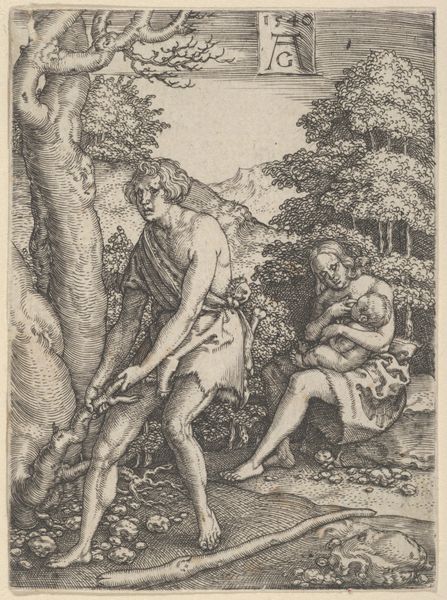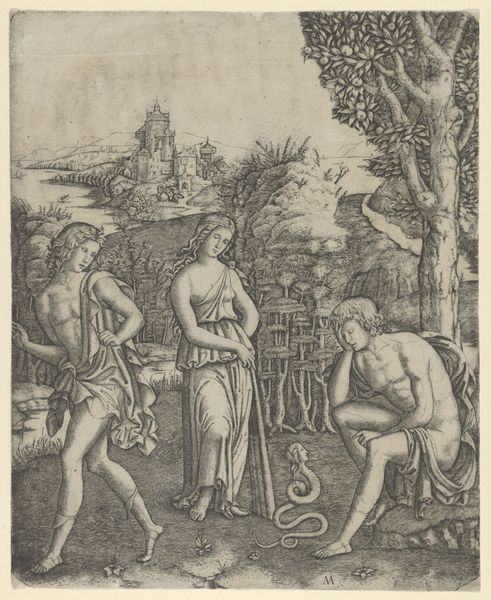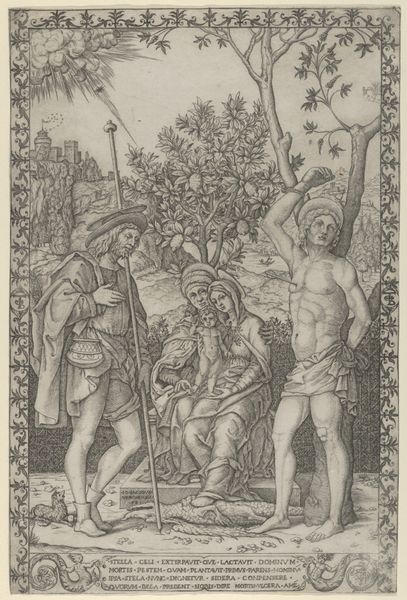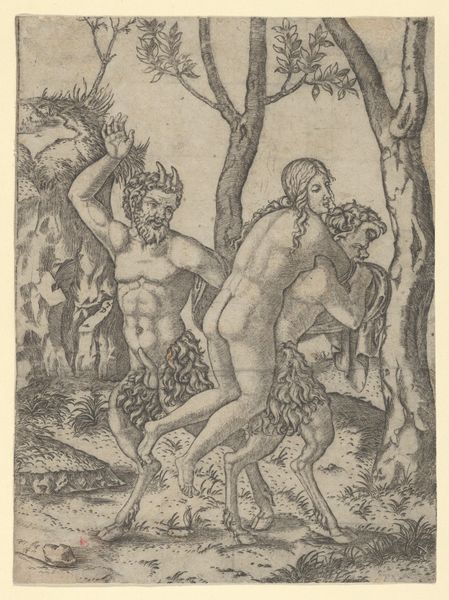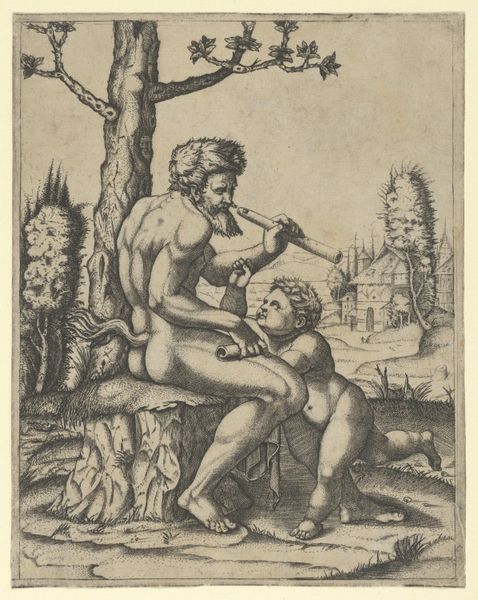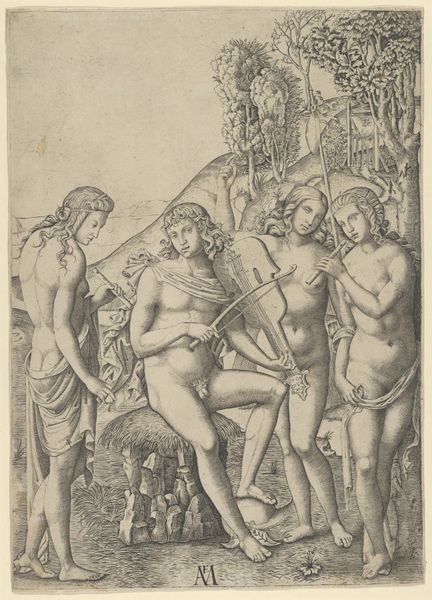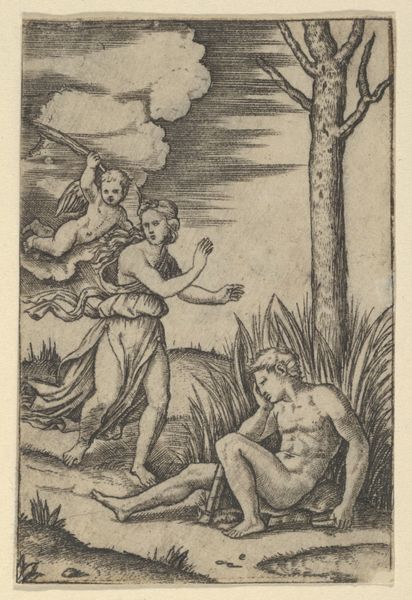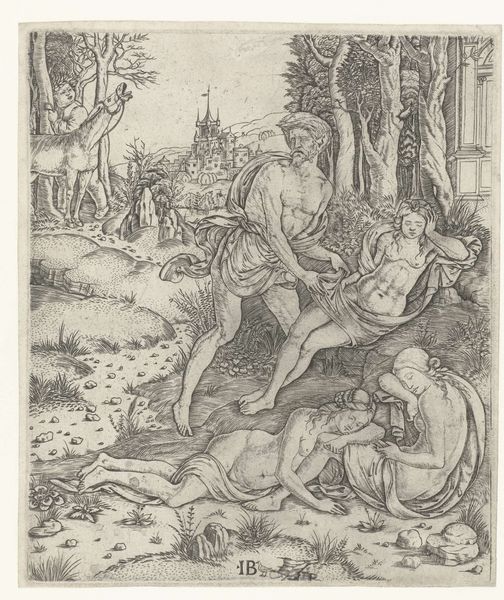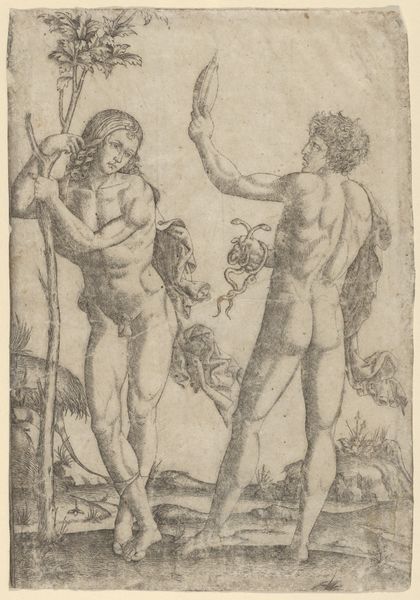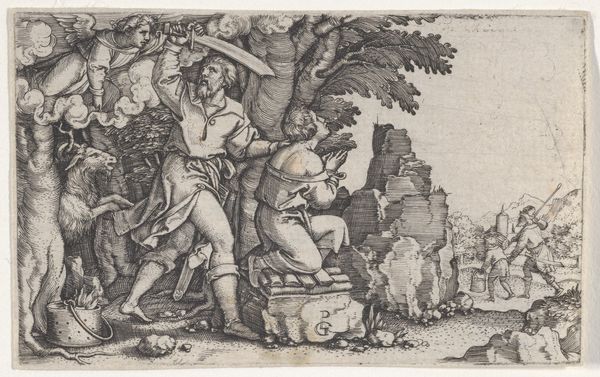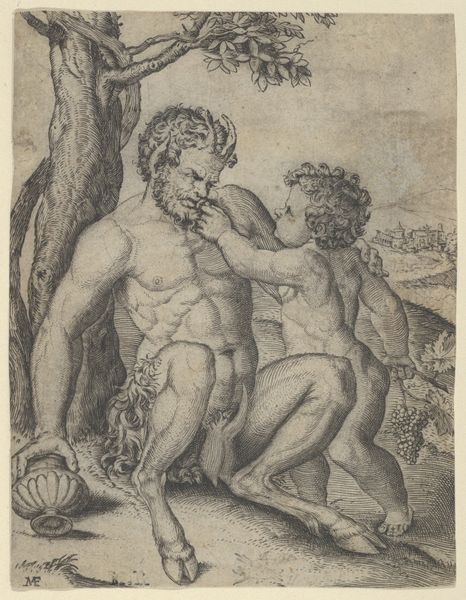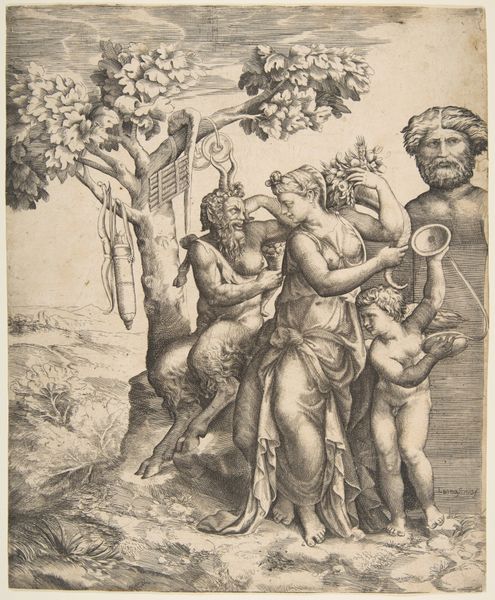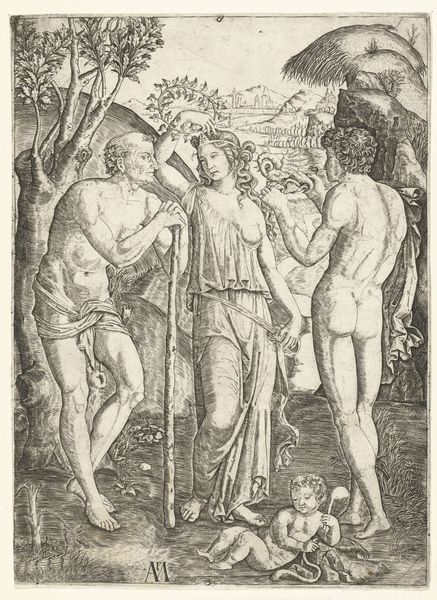
print, engraving
#
ink drawing
# print
#
landscape
#
figuration
#
11_renaissance
#
genre-painting
#
northern-renaissance
#
engraving
Dimensions: sheet (trimmed to plate mark): 27.6 x 21.7 cm (10 7/8 x 8 9/16 in.)
Copyright: National Gallery of Art: CC0 1.0
Curator: Look at the Faun Family print made around 1507 by Giovanni Battista Palumba, crafted using engraving. Doesn't it immediately evoke a sense of idyllic serenity? Editor: Yes, until you notice the dead animal head there below; I also cannot stop focusing on the contrast between the delicate lines used for the landscape and the heavier strokes defining the figures. Curator: The medium itself speaks volumes. The labor intensive process of engraving, demanding precision, elevating printmaking from mere reproduction to artistry. We have a metal plate, a burin, the skilled hands translating vision into a tangible object, and ultimately the possibility of making an image widely available at the time, and affordable compared to paintings. Editor: Indeed. Notice how Palumba uses the faun, a being linked to wild nature and raw emotion, to tap into much older pagan traditions, and probably express something about our conflicted relationship to civilization, represented here by the distant church towers. This print becomes a potent visual symbol for a return to innocence. Curator: But also, let’s not overlook the materials. Paper was increasingly produced in Northern Italy during the Renaissance, made possible by watermills – we see technological and economic forces that permit more affordable and diverse creative production. Consider also the engraving tools needed and workshops involved. All play a crucial role! Editor: Good point, still, it’s hard not to notice how the reclining dog could symbolize fidelity, while the loving family unit underscores classical virtues. It reads almost as a Renaissance reinterpretation of a lost pastoral myth. The faun family echoes ancient themes of harmony with nature. Curator: So true! And yet, it all came from very tangible instruments handled by talented engravers. Looking at this beautiful engraving allows us a glance into that time, and into what those artisans deemed important when constructing art that they would distribute around town to be sold! Editor: Yes, now you mention that I see the print not only as a work of artistic imagination but also as an intriguing artifact about work and societal transformations. It invites you to read symbols and understand labor behind them. Curator: Exactly. Art exists because of process and not as a miracle. Editor: Both seem crucial aspects of the artwork; many narratives blend through its marks.
Comments
No comments
Be the first to comment and join the conversation on the ultimate creative platform.
